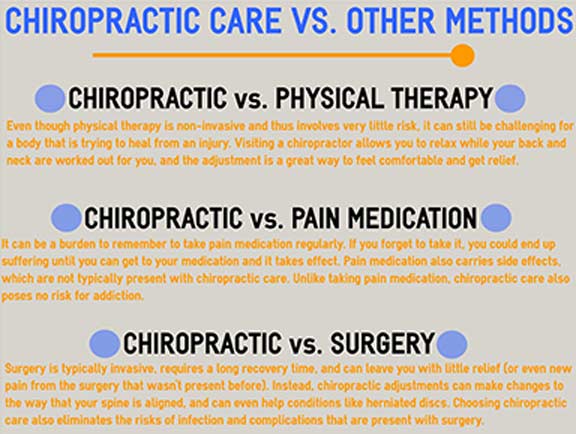A Day In The Life Of A Pain In The Back Patient: Tips For Taking Care Of Pain At The Workplace
A Day In The Life Of A Pain In The Back Patient: Tips For Taking Care Of Pain At The Workplace
Blog Article
Author-Udsen Cullen
Visualize browsing with your day with a constant tip of discomfort remaining in your back. The battle to discover relief while managing jobs can be discouraging. However, with edta chelation therapy near me in place, managing your neck and back pain at the office can be less of a burden. By making straightforward changes to your workspace and including targeted practices, you can take control of your pain and boost your productivity. Stay tuned to uncover constant lower back pain that can make a significant difference in your day-to-day work routine.
Usual Triggers of Neck And Back Pain
When it comes to taking care of back pain at the workplace, understanding the common triggers is critical. Poor position places high amongst these triggers. Resting stooped over at your workdesk for extended periods can stress your back muscle mass and cause discomfort.
Lifting heavy things improperly is another wrongdoer. Bear in mind to flex your knees and use your legs, not your back, when lifting to stay clear of unnecessary pressure.
Lack of motion throughout the day can additionally add to back pain. Make an aware effort to take short breaks to stretch and walk around, as prolonged sitting can aggravate discomfort.
Moreover, stress and anxiety is a considerable trigger for back pain. High anxiety levels can cause muscle tension, particularly in the back location, leading to pain. It's necessary to discover healthy and balanced means to manage tension, such as deep breathing exercises or mindfulness techniques.
Lastly, poor ergonomics in your work space can also result in pain in the back. Ensuring your chair, desk, and computer system configuration are ergonomically friendly can make a significant difference in lowering stress on your back.
Ergonomic Workstation Configuration
To produce a work area that sustains your back health and wellness and minimizes the risk of discomfort, concentrating on an ergonomic workstation arrangement is vital.
Begin by adjusting your chair to make sure that your feet are level on the floor, knees are at a 90-degree angle, and your reduced back is sustained by the chair's back assistance.
Ensure great site goes to eye level to avoid stressing your neck and shoulders.
Setting your key-board and computer mouse near you to avoid reaching and stressing your arms.
Take regular breaks to stand up, stretch, and walk around to lower stiffness and promote blood circulation.
Take into consideration utilizing a standing desk or a workdesk converter to alternate between resting and standing throughout the day.
Keep in mind to keep frequently used things within arm's reach to stay clear of turning or overreaching.
Active Methods for Pain Relief
Seeking ways to actively soothe pain in the back while at work? Including straightforward yet reliable strategies can assist ease discomfort and boost your productivity. Beginning by taking time-outs throughout the day to stretch and walk around.
Mild exercises like shoulder rolls, neck stretches, and standing hamstring stretches can loosen up tight muscle mass and reduce stress. In addition, practicing good posture is essential for lowering pain in the back. Stay up directly, change your chair to sustain your reduced back, and maintain your feet flat on the floor.
Engaging in normal physical activity outside of work can also contribute to pain relief. Tasks such as walking, swimming, or yoga exercise can reinforce your back muscles and boost flexibility, causing far better pain management in the future. Bear in mind to stay moisturized and maintain a healthy diet to support total spinal column health and wellness.
Additionally, think about making use of ergonomic tools like back cushions or standing workdesks to advertise appropriate placement and minimize stress on your back. By actively including these strategies right into your day-to-day regimen, you can proactively take care of neck and back pain and boost your convenience at the workplace.
how long does it take to become a chiropractor , by carrying out these proactive approaches at the office, you can properly handle your neck and back pain and enhance your total health. Keep in mind to produce an ergonomic workstation arrangement, take routine breaks to stretch, take part in gentle workouts, and keep excellent stance. With these pointers, you can alleviate the influence of neck and back pain and make your workday extra comfortable and productive. Remain aggressive and care for your back to feel better at the office.
